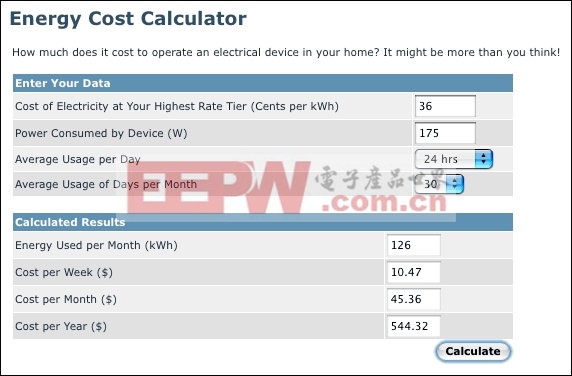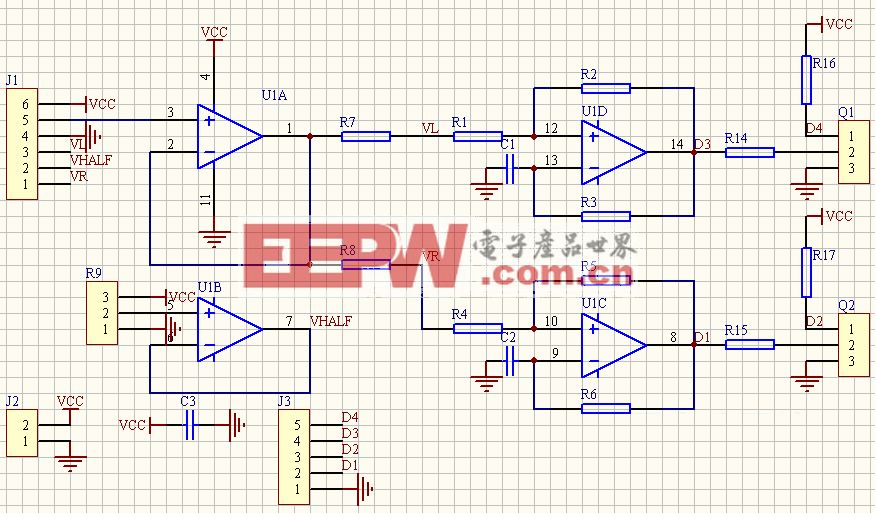能源使用量計算:如何養(yǎng)護(hù)成本驅(qū)動
Why Monitoring Energy Use Is Important
 Experts agree that the most powerful tactic to address climate change, pollution, and energy consumption is to reduce the energy that we use. "Watts we don't use" are always the cheapest power source and far less costly than building new power plants, whether those new plants are conventional or use alternative energy sources.
Experts agree that the most powerful tactic to address climate change, pollution, and energy consumption is to reduce the energy that we use. "Watts we don't use" are always the cheapest power source and far less costly than building new power plants, whether those new plants are conventional or use alternative energy sources.Step one is awareness: think about saving power. As consumers, we naturally think of large appliances such as the refrigerator and furnace. In the office, we think about lights, desktop computers, and factory equipment. But the smaller devices, the ones that run most of the day, may actually be secretly consuming high volumes of energy!
Maxim's CEO was surprised to discover that a media server in his home was costing $473 (U.S. dollars) a year in electricity. In just over a year, the device cost him more in power than its purchase price! As consumers and engineers, we wonder whether the designers of these devices are seriously considering end users' energy costs.
Knowing the cost of energy usage will drive conservation. It is clear that we can save ourselves and our customers money if we make good design choices for the environment—often without much sacrifice.
Calculating Energy Costs
As every engineer knows, energy calculation is straightforward. The unit of electrical energy is the kilowatt-hour (kWh), found by multiplying the power use (in kilowatts, kW) by the number of hours during which the power is consumed. Multiply that value by the cost per kWh, and you have the total energy cost.Total energy cost = (Power in watts/1000) × hours operating × cost per kWhMaxim's Energy Cost Calculator makes the calculation even easier.

While the energy calculation is straightforward, there are variables to consider. You need to account for:
- Varying electric rates
- Differences between labeled and actual power
- How many hours a day the device operates
- Different operating modes (e.g., operating and standby)
Varying Rates
In most communities, energy costs are not constant. Residential rates are often "tiered." The more you use, the more you pay. Some utilities even charge by time of day, with lower rates during off-peak hours.You should calculate costs at your highest usage rate (i.e., your highest "tier"). That is how much you pay for each kWh that you add or subtract from your present usage. It is the amount that you will save when you reduce your usage. The U.S. national average residential rate is about 11.5 cents per kWh (November 2008 U.S. Department of Energy figures), but you may be paying 36 cents or more for each additional kWh! To determine your rates, look at your electric bill or check your utility company's website.
You also need to account for time of day, if your rates vary during peak and nonpeak hours.
For more information on electricity usage and costs in the U.S., go t Energy Information Administration.
Power Consumption
Next, you need to find out how much power the device uses. The most accurate way is to measure usage with a power meter (available in the U.S. for $20 to $60).Alternatively, you can look at the label on the product. But labeling is often not very accurate because it shows the maximum power. Many devices consume much less than the label indicates. For fixed-power devices such as a light bulb, the label is accurate.
Finally, do not forget to calculate for the attached accessories, such as a computer's display.
You may need to do some math to calculate the usage in watts:
Power (watts, W) = Current (amperes, A) × Voltage (volts, V)As an example, a device that is rated to use 2.5A and runs from U.S. house current (120V), uses 2.5 × 120 = 300W.
Hours of Operation and Modes
Some devices operate at full load 24 hours a day. Many devices use power even when they are "off." Chargers that remain plugged in while the devices that they charge are unplugged, can still consume power, especially in older designs.A media server is especially wasteful: the disk spins and all of the power supplies run at full power even when the media server is idle.
Some devices vary their power consumption, depending on how they are used. Consider, for example, a coffee pot. It uses 800W but only for 10 minutes, then it drops to pot-warmer mode for one hour and draws negligible power. If you make one pot of coffee a day, your usage is 0.133kWh a day, or 4kWh a month. That energy costs just 40 cents a month.
A computer will use less power in sleep mode. A 25W light that burns all day uses more power than a 1500W toaster that is on for 40 seconds in the morning.
Duty Cycle
Finally, consider the duty cycle for devices that vary their usage throughout the day. A heater that is operated by a thermostat will consume power only when it is on.Second-Order Effects
In an air-conditioned space, wasted energy costs you twice! An extra watt of energy produced in a cooled room increases the load on the air conditioner. This is difficult to calculate, but keeping this in mind will help you prioritize your energy conservation activities.The Power to Save
Once you know which devices consume the most energy, you can find ways to reduce consumption. The biggest saving is often simply removing a device that you no longer really need.The easiest savings may come from turning off devices that you are not really using, especially items like a media server or a light that operates all day. Computing equipment, such as printers, can be turned off. Power strips and timers (or home automation controllers) can power down items that are not in use. But be careful. Using a power strip to power down is just like unplugging the devices; some devices can fail or lose data if powered down often without using their power switch.
In many cases, replacing older equipment can save you money. Consider all the electronic devices around you, and take a close look at the biggest power users. Then use the energy calculator to determine what a more energy-efficient replacement would save.








評論